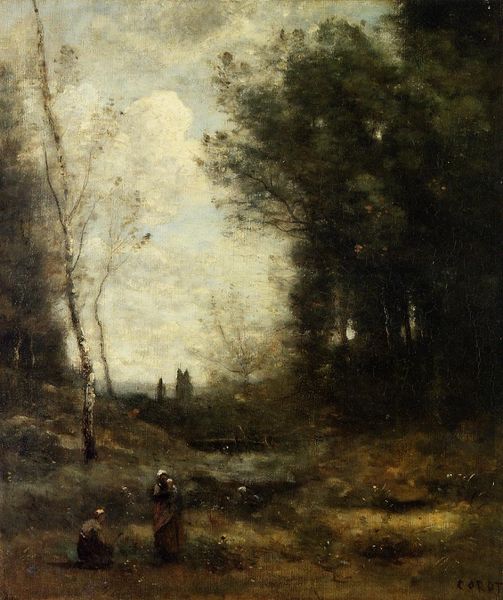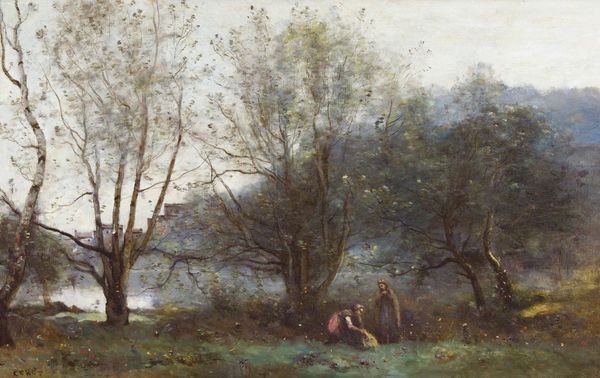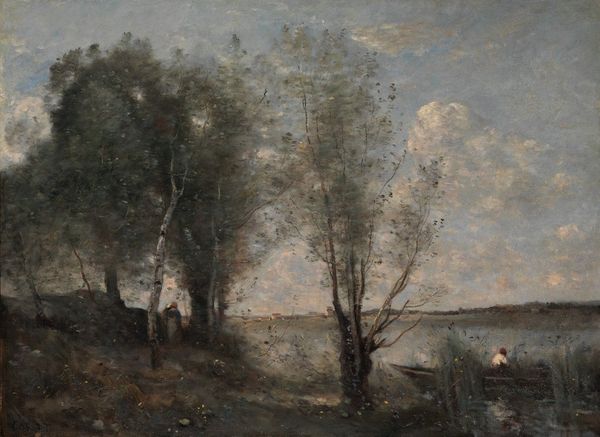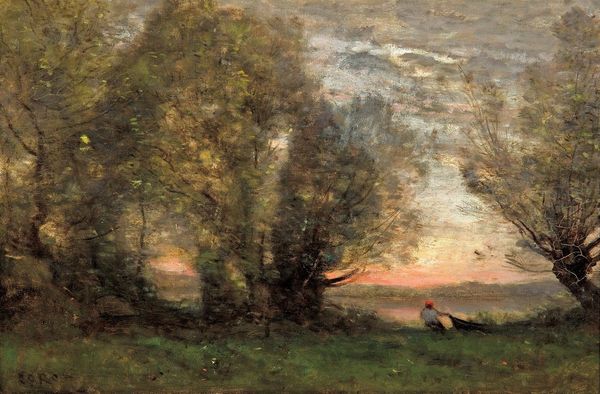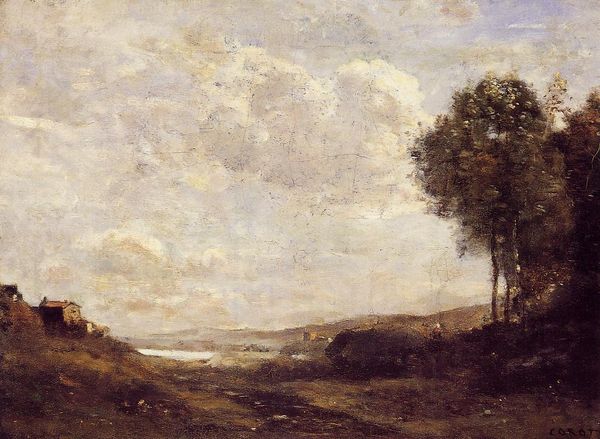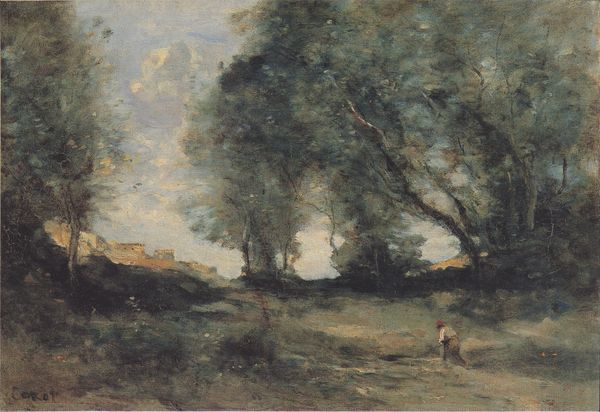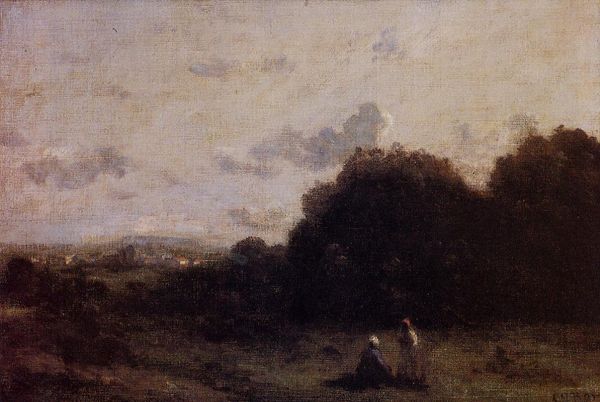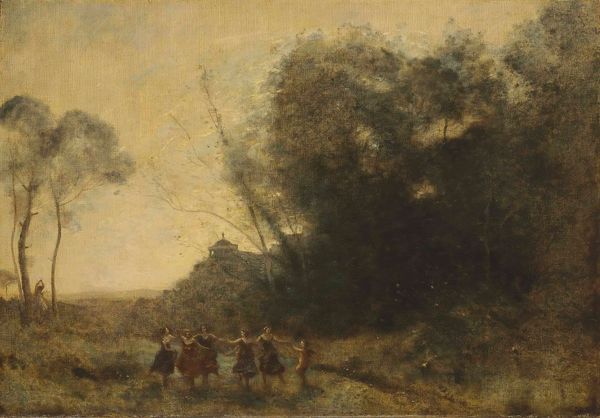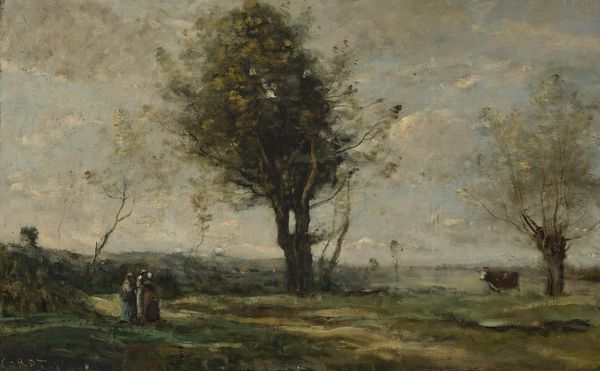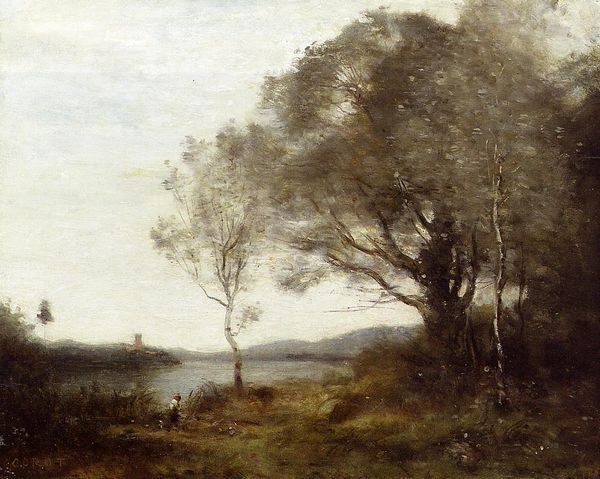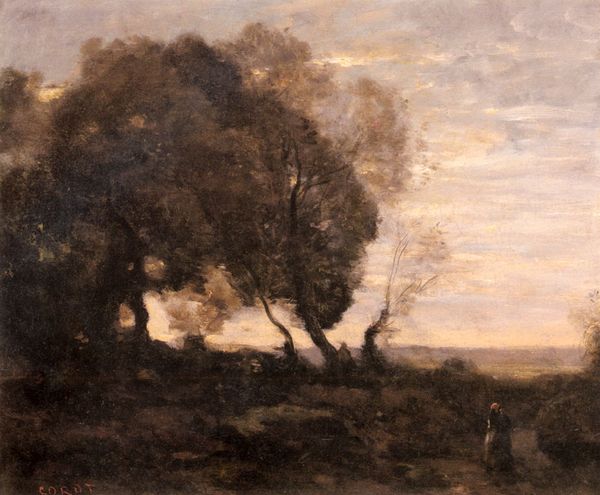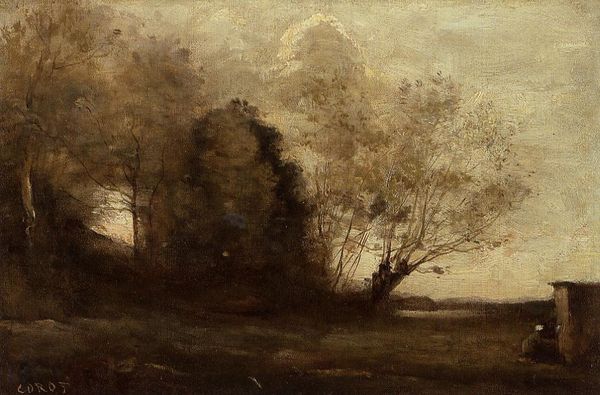
#
tree
#
impressionistic
#
sky
#
abstract painting
#
rough brush stroke
#
charcoal drawing
#
impressionist landscape
#
possibly oil pastel
#
oil painting
#
acrylic on canvas
#
underpainting
#
watercolor
Copyright: Public domain
Curator: Today, we are looking at Camille Corot's "Hamlet and the Gravedigger," completed in 1874. Editor: It’s somber. A muted palette—lots of browns and grays—gives a feeling of introspection, of standing at the edge of something profound and slightly unsettling. Curator: Absolutely. Corot's choice to depict this scene from Shakespeare’s "Hamlet" places the drama within a broader meditation on mortality and class. The gravediggers, typically common laborers, are positioned centrally, forcing the viewer to consider the societal implications of their grim task. The play examines power structures, justice, and the weight of responsibility – all highlighted here. Editor: The composition is fascinating. Note how the darkness of the left side, the mass of trees, counterbalances the lightness of the sky on the right. It's not just illustrative; the contrast functions as a structural element, almost a symbolic representation of the play's conflicting forces: life and death, light and shadow. Curator: Exactly, and let's consider that Shakespeare’s work allowed for the exploration of forbidden topics such as madness and regicide, albeit framed within fictional scenarios. "Hamlet" itself might be seen as a social critique of the state, veiled by plot devices. Editor: And look at the application of the paint! Those feathery, almost indistinct brushstrokes – it’s like a dreamscape. Everything is rendered in soft, blurred edges, enhancing the melancholic mood. There's no harshness, even in the implied reality of death. Curator: Corot was engaging with the rising interest in literary themes, appealing to a sophisticated audience aware of current artistic movements like Impressionism, while reflecting on timeless universal conflicts that remain disturbingly resonant in our modern existence. Editor: It’s more than illustration; the structural use of shadow, line, and especially those shimmering colours elevates the scene to something purely felt. Corot creates his interpretation of the scene through colour and form as much as narrative. Curator: Seeing it this way certainly sheds light on Corot's genius in blending commentary and artistic approach. Editor: It allows me to move beyond a narrative context to appreciate its formal qualities in new ways, thank you.
Comments
No comments
Be the first to comment and join the conversation on the ultimate creative platform.
